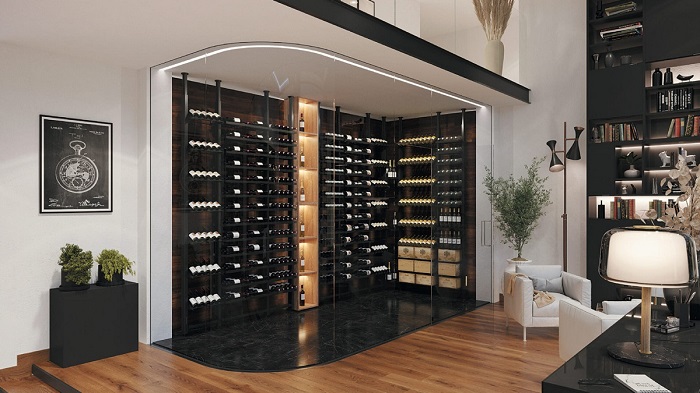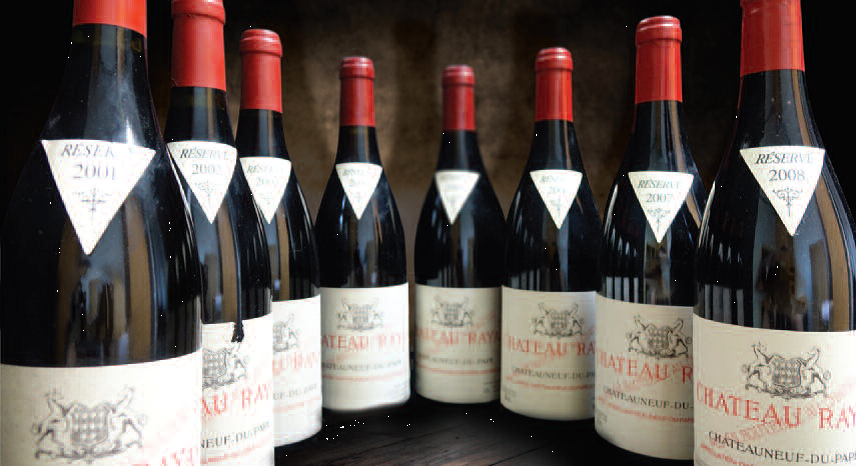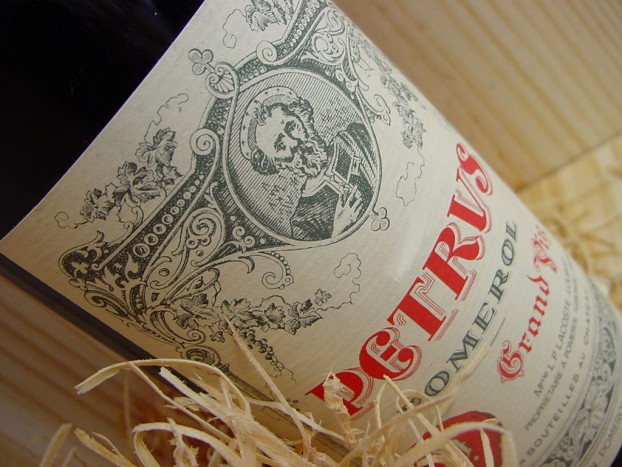
Wine storage is a delicate matter which requires specific conditions to guarantee the quality of the wine and preserve its flavours and aromas. When choosing a wine cabinet, it is essential to take the way the wine is consumed into consideration. In fact, requirements may vary depending on the willingness to age the wines or to store them in ideal conditions for tasting in the near future. EuroCave, the French manufacturer of top-of-the-range wine cellars and cabinets, explains the big differences between a service wine cabinet and cabinet for maturing wine.
Maturing cabinets – storage and maturation
We know that a stable temperature of 12°C is the ideal storage temperature for wine, and also for everything produced from the fermentation of grapes. It allows the wine to develop and reach its peak progressively without being rushed. However, keeping bottles of wine at this temperature for several years is difficult in our modern homes.
What is the peak for a wine?
The peak is this ephemeral, magical moment when, after the meticulous work of the winemaker, the wine reveals all its splendour. This is when the wine obtains its very best balance, from aromas to flavours, and offers an exceptional tasting experience. The peak varies depending on several factors, such as the grape variety, vintage and storage conditions. Some wines reach their peak relatively quickly whereas others require a longer maturing period in the cellar to reveal their full potential. A wine maturing cabinet is therefore exactly what you need to bring your bottles for cellaring to their peak.
The wine maturing cabinets are designed to recreate the same conditions found in a wine cellar and thus enable your wines to develop slowly.
So, what are the five main characteristics of a wine maturing cabinet?
1. A constant, even temperature, generally between 10°C and 14°C, regardless of the outside temperature. This temperature stability is crucial to enable the wines to age harmoniously, favouring slow maturation.
2. Good air circulation will also allow better temperature homogeneity and prevent the development of unpleasant odours. Many wine cabinet models are fitted with a carbon filter to limit these odours.
3. Good humidity. A controlled humidity level, generally around 70%, is essential to preserve the integrity of the corks and thus prevent the wine from altering.
4. Protection against vibrations which could disrupt the wine ageing process and alter the aromatic structure of the wine. The maturing cabinets are therefore often fitted with Silentbloc® bushes.
5. Protection against UV rays, which are harmful to wine, using either solid doors or glass doors with double or triple anti-UV glazing.
These so-called “1 temperature” wine cabinets are ideal for maturing bottles of wine because they enable the wines to develop their aromas and to mature over time. Most often a maturing cabinet is fitted with a solid door and storage racks to optimise its filling capacity. You could also opt for a wine cabinet with a glass door and wood racks making it possible to store your bottles with their labels showing, without impacting the protection of your wines.
Service cabinets – Wines ready for tasting
The wine service temperature has a considerable influence on the wine’s nose and how it feels on the palate. Too cold and the wine shuts down and does not show its potential. Too hot and it accentuates the alcohol and stifles the aromas. Respecting the service temperature of the wine does not therefore leave room for improvisation.
Service cabinets are specially designed to store several types, or colours, of wine and bring them as close as possible to their ideal tasting temperature.
Generally speaking, there are 3 types of models:
- The multi-temperature service cabinet. This wine cabinet has a tiered temperature over the entire height of the cabinet. Therefore, it enables you to separate the service of a red Burgundy at 16°C from the service of a Bordeaux at 18°C or a rosé at 11°C.
- The dual temperature service cabinet. This wine cabinet contains 2 distinct temperature zones, making it possible to store different colours of wine, such as red and white, with each one at its optimal temperature. This will enable you to keep your red wines at between 15°C and 20°C and your white wines, rosés and Champagnes at a cooler temperature of between 5°C and 13°C.
- The 3-temperature wine cabinet. This wine cabinet with its 3 independent compartments appears to be the most versatile. It makes it possible to consider several storage modes and thus meet various needs. Each compartment can be individually adjusted to reach the optimum tasting or storage temperature for each type of wine. Generally, this wine cabinet has a central zone to store wines over the long term with a temperature somewhere between 10°C and 14°C. There is also a cooling compartment at the bottom of the cabinet for Champagnes, rosés and whites, and a compartment for bringing red wine to room temperature at the top of cabinet, offering an adjustable temperature range of 15°C to 22°C. These wine cabinets are highly versatile and are suitable for wine lovers with varied needs.
To facilitate serving your wines, the service wine cabinets can be fitted with accessories such as shelves for storing your open wine bottles upright or even display shelves for presenting your bottles at an angle with the labels visible.
Finally, which wine cabinet should you choose, a maturing or a service one?
Maturing cabinets are intended for people who want to age their wines over the long term in optimum conditions, similar to those found in a cellar found in buildings. Service cabinets are better suited to those who wish to taste their wines at the ideal temperature, with no desire to store their wines. To finish off, the 3-temperature cabinets are extremely versatile, meeting the different requirements for storage and service.
Regardless of which type of wine cabinet is chosen, it is essential to adhere to the appropriate tasting conditions to guarantee the full expression of flavours and the quality of the wine. Collectors who take the time to build a wine library should be able to taste them at their very best. Each wine has its correct service temperature to bring out all its characteristics when tasting. Don’t forget that wine warms up rapidly in the glass by around 2°C. Take this into account when you place wine on the table.
Once you have decided what you would like to use a wine cabinet for, serving or maturing, the only thing left to decide is the room in which you wish to install it. There are built-in wine cabinet models, the dimensions and depth of which can be designed to your kitchen or customised furniture, or free-standing models to be placed in your cellar, for example.
EuroCave is the wine cabinet manufacturer bearing the labels Origine France garantie (Guaranteed French Origin) and Entreprise du Patrimoine Vivant (Living Heritage Company).
Take a look at the various EuroCave wine cabinet collections



